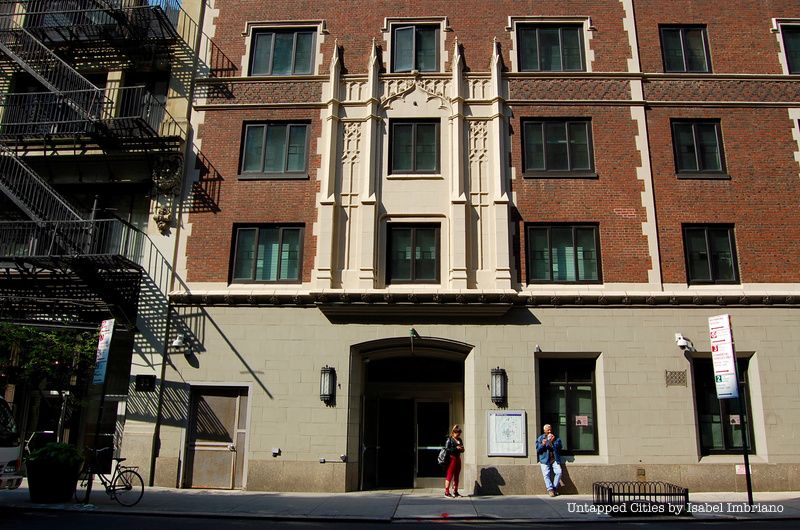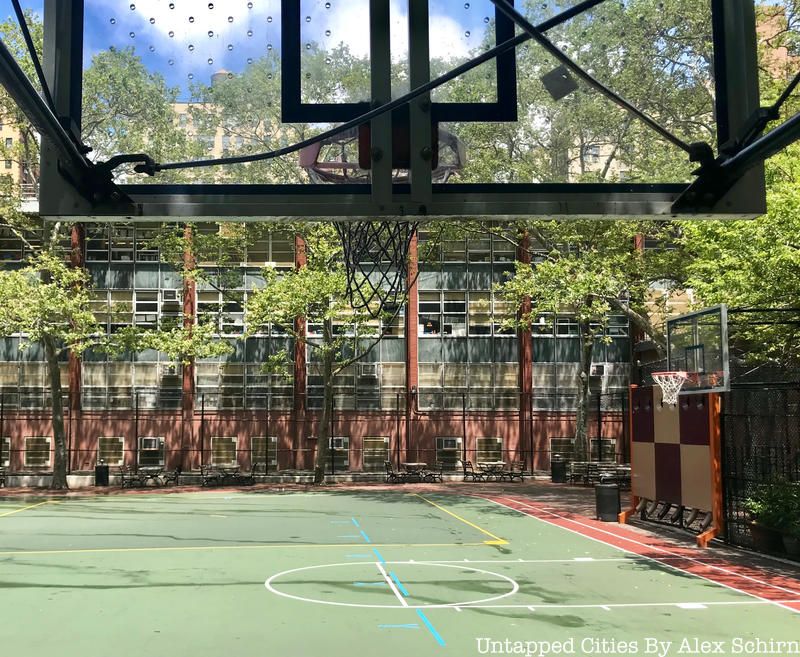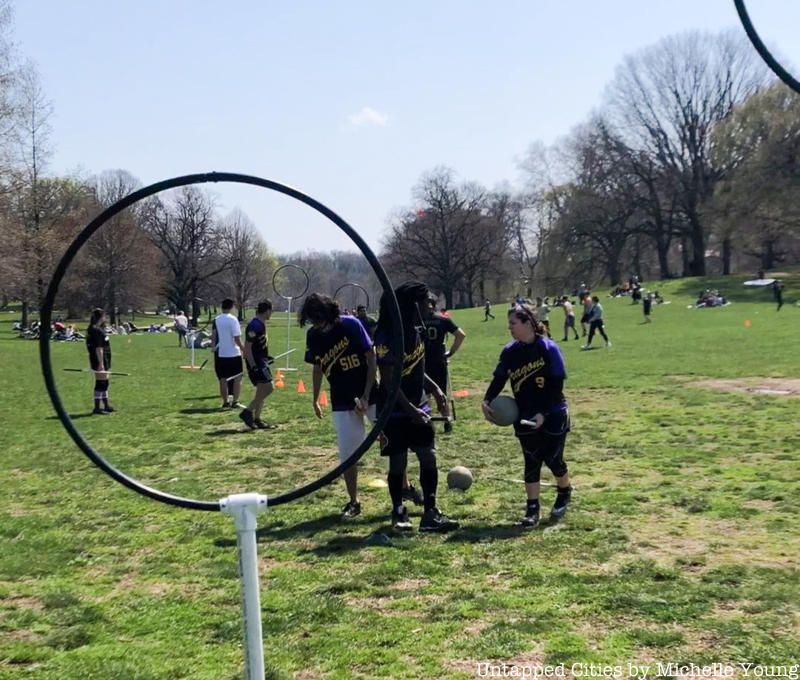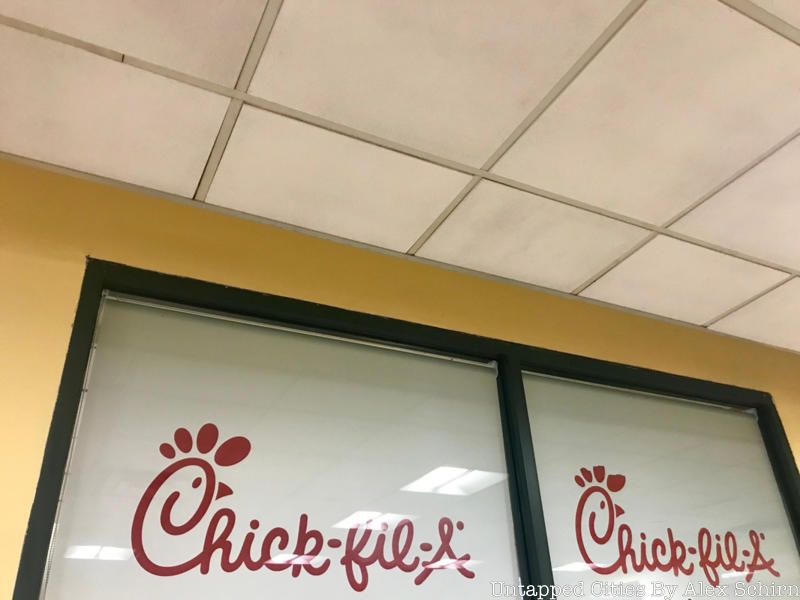Last-Minute NYC Holiday Gift Guide 🎁
We’ve created a holiday gift guide with presents for the intrepid New Yorker that should arrive just in time—



The founder of New York University (NYU), Albert Gallatin (1761-1849) was completely committed to American independence and democracy. He focused on securing education for all in the 1830s because this was a time when primarily privileged Americans studied at universities. From NYU’s initial class of 158 students, this vast university continues to expand worldwide. Some additions the school has made have been including a Chick-fil-A and a Quidditch team. Most of NYU’s fascinating secrets however lie in its history: a dormitory was a speakeasy, more than 200,000 burials are located at Washington Square Park, and the basketball team was involved with the mafia! Read below to learn about all the top 10 juicy secrets of NYU:

Brittany Residence Hall New York University
What once functioned as a sky-high speakeasy is now a seventeen story dormitory (Brittany Hall) and 24-hour study hall. This building was built in 1929 on the corner of East 10th Street and Broadway, and originally Brittany Hall was a luxury hotel with a penthouse that doubled as a speakeasy.
The building still has remnants of Prohibition-era history, such as pre-war ceilings. Furthermore, a haunted history remains within the dormitory. During the hotel’s construction, four-year-old Molly fell down an elevator shaft and since then Molly’s ghost continues to haunt and scare NYU students and faculty. Would you want to live in this dormitory with Molly?

The Washington Mews
The Mews is a tiny charming cobblestone street from the 1830s. It is located between University Place and 5th Avenue, just north of Washington Square Park. Washington Mews is owned by NYU and lined primarily with faculty houses that were once small stables and two-story carriages which housed horses, carriages, and coachmen. The coachmen served the wealthy residents who resided near the park, and the horses played a crucial role in traveling around the city.
In the 20th century, the Mews was the home of artists and writers. Sailors’ Snug Harbor on Staten Island leased the Mews to NYU in 1949 and up to today, the university has maintained these buildings. NYU’s French center, La Maison Francaise, is located on the south side of the street’s University Place entrance, and NYU’s German center, Deutsches Haus, is located on the north side and was open to the public for the 2018 season of the Chelsea Music Festival.

Edward Hopper had a live-work studio at #3 Washington Square with his artist wife Jo from 1913 until his death in 1967. He even painted the rooftop of the row house which was known as the “studio building,” and found much inspiration from the view for his urban paintings. It would later also be the addresses for artists such as Clara Driscoll, William Glackens, Rockwell Kent, Ernest Lawson, Guy Pène de Bois, Walter Pach and Mary Tillinghast.
The building was threatened with demolition by New York University in 1947, highlighting the long, on-going battle between institutional expansion and preservation in Greenwich Village, but the building is now part of NYU Silver School of Social Work. On a visit you can find hopper’s Easel, a press for etchings, a stand he used for his models, an original refrigerator, gas burner, oven and stove, along with reproductions of his art and portraits of him and his wife by Arnold Newman and Berenice Abbott.

Part of an urban renewal project, University Village was built on three demolished superblocks in Greenwich Village. The NYU portion of this project was designed by architects I.M. Pei and James Ingo Freed (of Pei, Cobb, Freed & Partners). Two of the three 30-story towers are dormitories for graduate students and NYU faculty, and are now called the Silver Towers after an NYU alumni and donor Julius Silver. The main plaza of University Village contains a sculpture by Pablo Picasso and Carl Nesjär.
It may be surprising to those that might still find the tower-in-the-park design incongruous to the low-rise Greenwich Village neighborhood that these buildings, and the entire superblock was designated an official New York City landmark in 2008, the culmination of an advocacy effort by the Greenwich Village Society for Historic Preservation to prevent the construction of an additional two new towers on this superblock.

Washington Square Park
Washington Square Park is built on top of at least 20,000 burials. Most of these bodies were not disinterred, so they still remain under the grass and concrete. In the 18th century, there was a church cemetery and a city potter’s field (a public burial site), where the poor, criminals, and sickly were buried. Twenty-five individuals were discovered inside a vault at the park. This discovery shows that the church plots may have contained large vaults instead of individual burials or burials in trenches.
Washington Square Park was first named the Washington Military Parade Ground after George Washington in 1826. The park hosted the national jubilee of the 50th anniversary of the Declaration of Independence and is now home of an additional park house, a dog park, play area, comfort station, lively performers, and talented artists. Perhaps the zombies buried underneath the Washington Square Park will join these performers or accompany you on your stroll through the park!

New York University Brown Building
The Brown building at NYU—29 Washington Place—was the site the tragic Triangle Shirtwaist Factory Fire of March 25, 1911. The fire occurred on the eighth floor, where the Triangle Waist Company garment manufacturer was located and many women and children worked here. 146 people, mainly young immigrants, died in the fire—either getting burned alive or jumping out of windows, and it is important to commemorate the victims and remember the victims of the Triangle Fire. This event was a tragedy and called for a re-evaluation of workplace safety and also workers rights. After this horrific incident, reform movements sparked and thousands of workers were inspired to change the industrial world.
Today, the Brown Building houses the chemistry and biology departments at NYU. Would you like to take classes in this building that housed this tragic site?

Founded on April 18, 1831, NYU is now one of the largest private universities in the world and the largest in the United States. NYU’s first semester started with 158 students. Now, there are 50,000 graduate and undergraduate students who attend NYU. These students currently come from every state in the union and 133 foreign countries.
The campus is still expanding after 188 years, far beyond its main campus in Greenwich Village, Manhattan. The campus has three degree-granting campuses in New York City, Abu Dhabi, and Shanghai. There are also study away sites in Africa, Asia, Australia Europe, North and South America.

Elmer Holmes Bobst Library | New York University
Whether the Bobst library is troubling because it is named after the controversial historical figure Elmer H. Bobst (a known anti-Semite) or because it contains coverings that are suicide veils, Bobst is a stunning library and it is no wonder why many NYU students choose to study here. The library is an atrium, so every gold aluminum covered floor is visible from any angle. The gold screens have holes that replicated digital pixels that serve as suicide veils to reduce suicide jumpers. Architect Philip Johnson designed the building, and he mentioned that the tops of the metal gates on each building purposefully resemble crosses and from a distance, the floor looks like spikes.

Brittany Residence Hall New York University
Starting in 2002, NYU was one of the first universities to adopt protections for students who identify with various gender identities. In 2012, NYU allowed both undergraduate and graduate students to be able to reside in gender neutral housing upon request. Gender neutral housing refers to gender inclusive housing, so students are able to live with other students, regardless of their legal sex.
Before the gender neutral housing policy, room assignments had to be single-gender which is still enforced for incoming freshmen. Freshmen instead can request a room assignment based on gender identity, the gender the student personally identifies with. The gender neutral housing policy allows for friends or strangers of different genders to live together, and it allows for transgendered students enrolled in NYU housing to not be forced to identify as one specific gender on the housing application.

Both the mafia and gambling played a role in NYU’s basketball history. In 1933, attending games for the men’s Division I basketball team was quite popular—games sold out each week at Madison Square Garden (MSG). Three gambling rings, however, were discovered in 1945 at MSG and this caused the District Attorney at the time to indict 32 players from New York schools.
Most of these players who were involved in gambling and fixing games were students attending NYU. The scandal continued into 1961 and investigators busted nearly 40 players in the league for organizing games and also communicating with Mafia bosses, such as Thomas Eboli and Vincent Gigante. Eventually, the men’s basketball team was cut. In 1983, the team came back and currently continues as a Division III team.

The NYU Quidditch team Pigeons practicing in Prospect Park
The magical game of Quidditch from Harry Potter is brought to you live at NYU. The fictional game includes flying on broomsticks across a field to dodge bludgers, scoring with the quaffles, and chasing down the snitch. The fantasy world of Harry Potter’s Hogwarts transforms to the literal world of NYU. NYU students take the place of wizards and the field transforms to ground level as students run around with a broomstick mounted between their legs.
There are two Quidditch teams—Pigeons and Varsity—that compete in tournaments in the National Quidditch League in the Northeast division. The Pigeons are a casual team while the Varsity team is more competitive and a time commitment. The game consists of lots of running, strategy, and physical contact—and always there is a ton of magic!

Chick-fil-A restaurant
On University Place at Weinstein Hall, the first Chick-fil-A in New York City opened up and it was on NYU’s campus. This popular fast-food restaurant is located in the upstairs food court “Upstein,” and many students were excited to get their hands on Chick-fil-A’s delicious waffle fries and chicken.
This Chick-fil-A actually caused strife on campus. In 2012 students called for a boycott and raised 10,000 signatures on a petition to remove Chick-fil-A because it had financial ties to anti-gay groups. NYU officials declined the banning of Chick-fil-A. because the Chick-fil-A company was actually licensed through its restaurant vendor. So, these anti-gay ties were not connected with the Chick-fil-A chain at NYU.
Curious about the unheard secrets of other universities in New York? Check out these articles: The Top 10 Secrets of Barnard College, the top 15 secrets of Columbia University, and The Top 10 secrets of Fordham College!
Subscribe to our newsletter